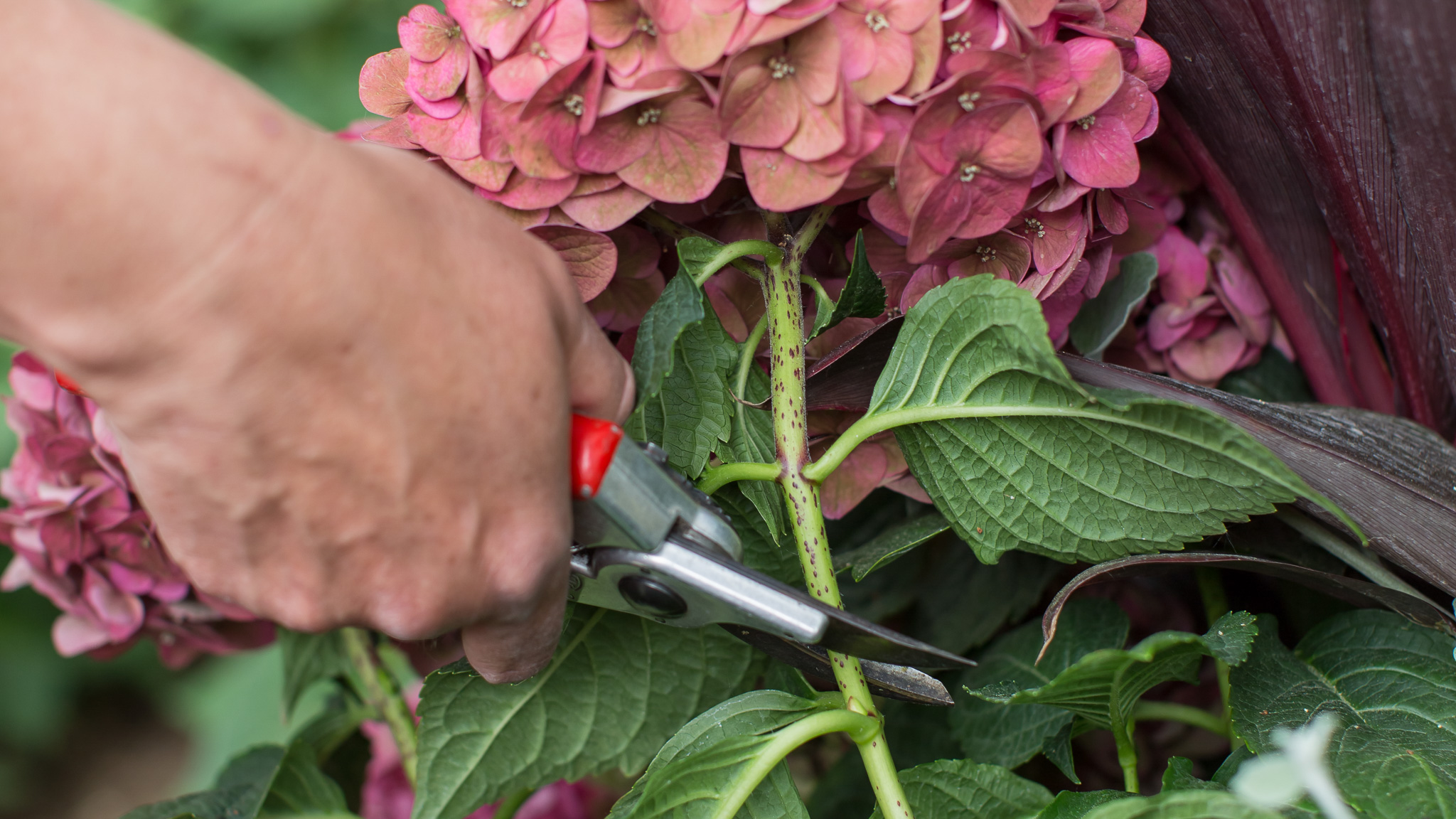How to Deadhead Hydrangeas (By Type and Season)
Deadheading hydrangeas is simple—if you match your cuts to the plant’s bloom type and the calendar. Do it right and you’ll tidy plants, protect next year’s buds, and even coax a second flush on rebloomers. Do it wrong and you can erase a season of flowers. This guide shows exactly where and when to cut for every major type, with trusted, horticultural sources linked throughout (RHS, University Extensions, and expert-led guides). ( RHS )
Identify Your Hydrangea (Old Wood vs New Wood)
Old-wood bloomers set flower buds the previous summer and autumn; those buds overwinter on the stems. New-wood bloomers set buds on current-season growth. Rebloomers do both. Knowing this determines whether late-season cuts remove next year’s flowers. ( University of Maryland Extension )
| Type | Species | When to Deadhead | Where to Cut |
|---|---|---|---|
| Mophead/Lacecap Bigleaf | H. macrophylla (old wood) | In season as blooms fade; stop by early–mid Aug | Just above first pair of full-sized leaves beneath bloom |
| Mountain | H. serrata (old wood) | As above; stop by early–mid Aug | Just above first leaf pair |
| Oakleaf | H. quercifolia (old wood) | Promptly after bloom if tidying; avoid late cuts | Remove only the flower head |
| Climbing | H. anomala subsp. petiolaris (old wood) | Right after flowering; trim overlong shoots after bloom | Above first leaf/at a bud on wayward shoots |
| Smooth | H. arborescens (new wood) | Anytime in season for appearance | Above a node; structural pruning late winter/spring |
| Panicle | H. paniculata (new wood) | After panicles fade; structure late winter/spring | Above a leaf pair or node |
Old/new wood definitions and timing references ( University of Maryland Extension , RHS , The Old Farmer’s Almanac )
Cut Placement: The Universal Step
Follow the flower stem down to the first healthy node—often a pair of opposite leaves—and cut just above it. This preserves latent buds and avoids cutting too far down. For old-wood types, keep cuts conservative. ( The Spruce , BHG )

Seasonal Timeline: When to Stop and Why
How to Deadhead by Type
🌿Bigleaf Hydrangea (Mophead/Lacecap)
Mophead and lacecap bigleaf hydrangeas bloom on old wood. In season, remove spent blooms by snipping just above the first pair of full leaves; stop by early–mid August. In early spring, remove winter heads to the first strong buds. Leaving heads through winter can protect buds and add beauty. ( RHS , Martha Stewart )
⛰️Mountain Hydrangea
Treat like bigleaf: conservative cuts above a leaf pair and stop by early–mid August; reblooming cultivars benefit from prompt clipping after the first flush. ( The Old Farmer’s Almanac , University of Maryland Extension )
🍃Oakleaf Hydrangea
Remove only the flower heads soon after bloom if tidying; avoid late-season cutting. Minimal pruning preserves bark and fall color; buds form on old wood. ( RHS , Virginia Cooperative Extension )
🧗Climbing Hydrangea
Deadhead right after flowering and shorten overlong shoots in summer. For size reduction, stagger major cuts across years to avoid lost bloom. Flowers arise on vertically supported stems. ( RHS , Virginia Cooperative Extension )

🤍Smooth Hydrangea (e.g., ‘Annabelle’)
Blooms on new wood. Deadhead for appearance anytime; many gardeners leave heads for winter interest and prune late winter/early spring for structure and bloom size trade-offs. ( University of Minnesota Extension , Virginia Cooperative Extension )


🏵️Panicle Hydrangea
Also blooms on new wood. Deadhead after panicles fade; prune in late winter/early spring, often to a framework, to keep plants sturdy and floriferous. ( RHS , University of Minnesota Extension )

Rebloomers: Catch the Window
Reblooming bigleaf/mountain cultivars can produce a second flush if you clip the first round of faded blooms promptly in summer. After mid‑August, stop to avoid sacrificing next season’s buds or pushing tender growth. ( BHG , Martha Stewart )
Prompt summer deadheading on rebloomers is about timing, not aggression—shallow, tidy cuts yield better results than deep shaping cuts in mid‑season. ( BHG )
Tools and Technique at a Glance
- Sharp bypass pruners for clean node-level cuts
- Gloves and a small trug/bucket for spent blooms
- Disinfectant when managing disease between shrubs
Seasonal Images and Visual Cues
Leaving heads provides winter texture and can shield the buds beneath; many gardeners clean up in early spring instead of fall. ( Real Simple )
:max_bytes(150000):strip_icc()/SPR-how-to-deadhead-hydrangeas-8649437-step-01_3171-ef6c1260866942f7a7b8684fe919b93c.jpg)
Common Mistakes and How to Fix Them
FAQs
Is deadheading the same as pruning?➤
No. Deadheading removes spent blooms; pruning shapes or rejuvenates a plant. Timing and intensity differ by type. ( RHS )
Can I deadhead in early spring?➤
Yes, but on old‑wood types cut only to the first strong buds; waiting too long risks removing current‑season blooms. ( RHS , Martha Stewart )
Will deadheading make blooms bigger?➤
Quick Reference: Do’s and Don’ts
- Match timing to type and region; stop old‑wood cuts by early–mid August
- Cut just above the first pair of full leaves under the bloom
- Rebloomers: clip promptly after first flush to catch the window
- Prefer winter interest; tidy precisely in early spring
Old Wood New Wood Reblooming Late Cut Risk
Images and guidance from referenced sources are used to illustrate best practice and timing. Always identify your species/cultivar before cutting. ( RHS )